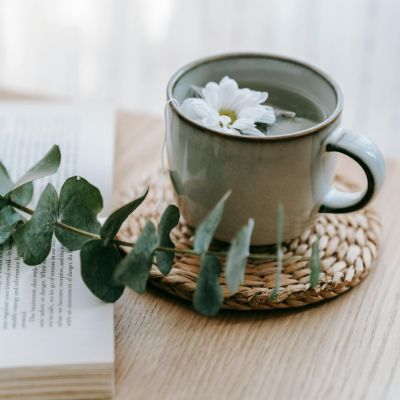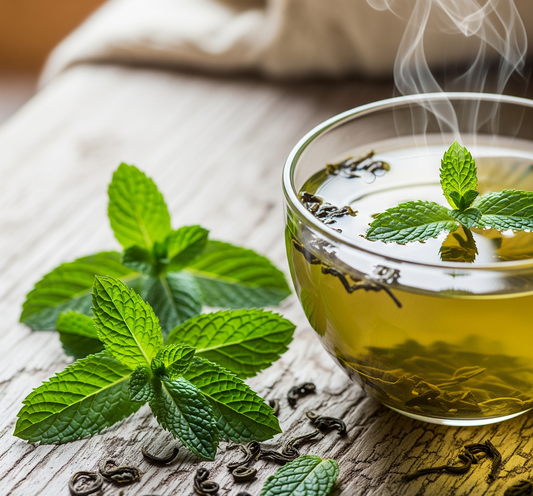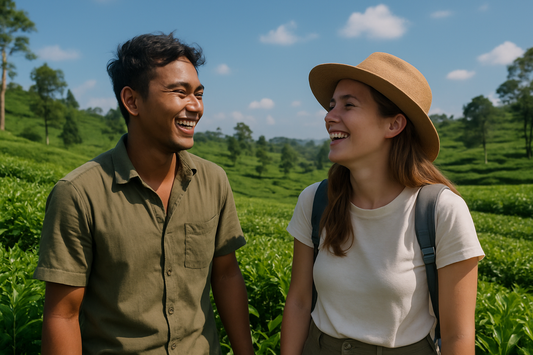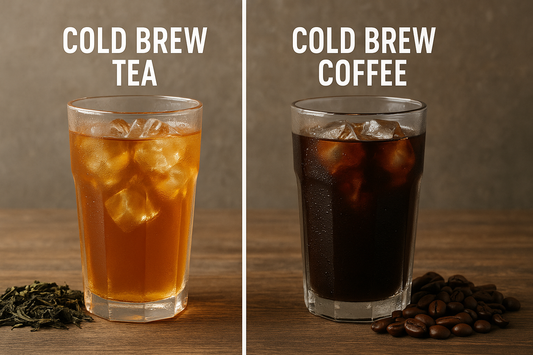White tea, known for its delicate flavor and light appearance, often confuses tea novices. Many wonder, does white tea have caffeine? Contrary to assumptions, it does contain caffeine, derived from the young leaves and buds of the Camellia sinensis plant. While white tea undergoes minimal oxidation, the caffeine levels can vary due to factors like plant variety and processing methods, making it a fascinating choice for tea enthusiasts seeking a unique experience.
White tea, often revered for its delicate flavor and light appearance, can seem mysterious and sometimes even mind boggling among the tea enthusiasts. There’s a running joke in the tea world that only after recognizing the most complex of flavors in the “strongest” of teas, can a tea connoisseur begin to detect the complex simplicity of a white tea.
But the intrigue of white tea doesn’t start with its flavor for novices. For most beginners, the term white tea in itself is a contradiction. When they think of tea, a glamorously dark drink floods their mind. So when a cup of unassuming white tea is served, they start to wonder how something that looks like water can be tea? They exclaim before taking a sip and to their untrained minds find that it not only looks like water but also tastes like one. To an untrained tongue, the delicacy of white tea can be a total miss for the first time. And because there’s very little “color” to the brew, it’s very easy to assume that white tea doesn’t have caffeine, the component generally associated with the darkest of coffees and teas.
This is a common misconception. Let us clarify why.
The Essence of White Tea
White tea is crafted from the tender young leaves and buds of the Camellia sinensis plant. At the foothills of Kanchenjunga, tea makers like Sonam Lama and Sharad Subba protect these nascent acquirings with all their energy. As soon as the leaves and the buds start to oxidize at a higher speed. So they must be treated like babies. The production process involves tea makers waiting for the correct moment when winter dormancy melts into the first sign of spring blooming.

Pluckers with the most delicate hands and years of experience are instructed to pick the youngest of leaves and almost all the unopened buds that have survived the cold Himalayan air. At factories, the leaves and the buds are allowed to simply wither and dry resulting in a product that is rich in green color and leaf-like form. Because there’s no extensive oxidation, the sweet smoothness of the leaves retain and we get to taste something very different from the oxidized teas like greens or black teas.
Caffeine in White Tea: An Overview
But just because white tea leaves go through minimal oxidation but that doesn’t mean they are free of caffeine. Caffeine is a natural alkaloid, a chemical that acts like a natural bug spray, to protect the new leaves from insects. Caffeine essentially protects the tender new growth. This protective mechanism is much like the nicotine found in tobacco leaves.
Because white tea leaves are the survivors of harsh winter conditions, the caffeine content in them can be unexpectedly high, especially in varieties made with buds or younger leaves. However, the actual caffeine content in your cup of white tea can vary widely.
Factors Influencing Caffeine Content
Several factors contribute to the caffeine content in white tea, making it a complex subject to unravel. These factors include:
- Plant Varietal: Different varieties of the Camellia sinensis plant can have varying caffeine levels. Certain varietals are naturally higher in caffeine than others. According to paper on the National Library of Medicine, fresh leaves from the Assam tea leaves (camellia sinensis var. assamica) contain more caffeine than fresh leaves from the Chinese version (camellia sinensis var. sinensis).
- Soil Conditions: The nutrients and composition of the soil where the tea plant is grown can influence the caffeine content. Soil rich in nitrogen, for example, can lead to higher caffeine levels in the tea leaves. It is believed that high mountain teas, like Everst Black have higher caffeine content because of the harsher environment, making growth slow but resulting in a more flavourful (and caffeinated) cup of tea.
- Age of the Plant: Younger tea plants tend to have higher caffeine levels. The younger plants are actively trying to survive the weather condition and reach maturity so it is loaded up with natural insecticides like caffeine. Several insects can cause tender tea shoots to wilt and become stunted and scorched. As the plant matures, the caffeine content may decrease.
- Processing Methods: Although white tea undergoes minimal processing, the specific methods used can still impact the final caffeine content. For instance, the duration and conditions of withering and drying can play a role.
- Leaf Maturity: As previously mentioned, the maturity of the leaves used in the tea can significantly affect caffeine levels. Younger leaves and buds, typically used to make white teas, tend to have more caffeine than older, more mature leaves.
Brewing Tips for Managing Caffeine Intake
So if you came here trying to manage your caffeine intake, then it’s better to know that white tea isn’t free of caffeine. All varieties of Camellia Sinensis contain caffeine. The amount of caffeine in your cup depends on several factors: the amount of tea leaves used, the temperature of the water, and the length of the brewing time.
A higher quantity of leaves will naturally infuse more caffeine, while hotter water and longer steeping times will extract more caffeine from the leaves. Conversely, using fewer leaves, cooler water, or shorter brewing times can result in a milder cup with less caffeine.
Consider the following tips:
- Shorter Steeping Times: Reducing the steeping time can lower the caffeine content in your cup. Steeping for 2-3 minutes instead of 5-7 minutes can make a noticeable difference.
- Cooler Water Temperature: Brewing white tea at a lower temperature (around 160-185°F or 70-85°C) can help minimize caffeine extraction. It is in general recommended that you use boiling water with only more heavily oxidized tea like black teas. Because white teas are recommended to be brewed with a relatively cooler water temperature, this is one of the most important reason why white teas are labeled as low-caffeine drinks.
Read more on: The Art of Cold Brew Tea: A Guide to Brewing, Benefits, and More
- First Flush vs. Second Flush: If you are super conscious of your caffeine intake, we recommend you consider choosing second flush teas. These teas are harvested later in the season and may have lower caffeine levels compared to first flush teas. They are more likely to contain mature tea leaves rather than young buds.
But do remember, when correctly brewed and explored, white tea makes for a remarkable beverage. Understanding the factors that influence caffeine content can enhance your appreciation and enjoyment of this delicate tea and might get you status update from a tea novice to a true practicing tea connoisseur. Whether you’re seeking a gentle lift from a cup of Silver Needle or a more robust flavor with lower caffeine with White Prakash, white tea provides a versatile and enriching experience.
We hope you enjoyed this blog and that your next sip is as restful and beautiful as the leaves of white teas.




